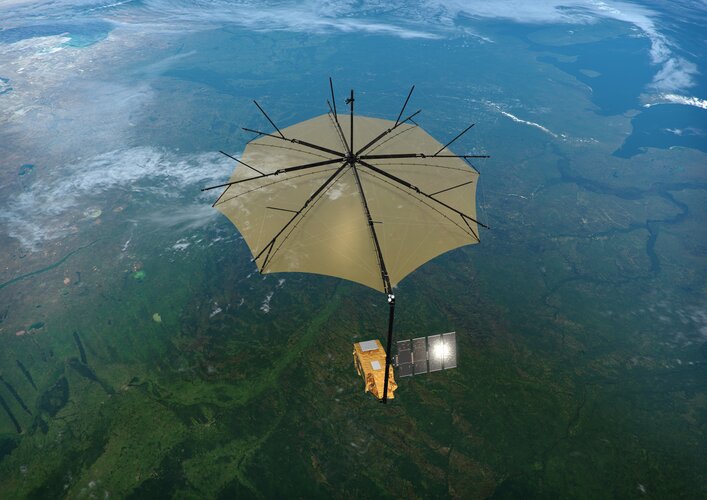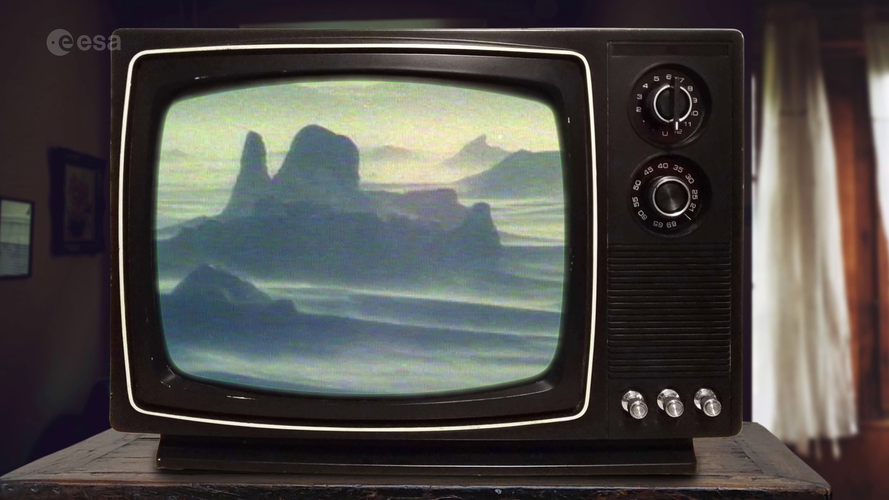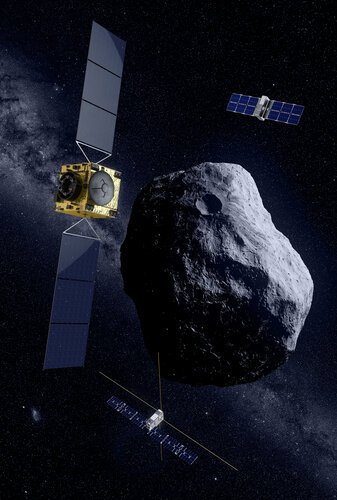
Copernical Team
Another Busy Day on Mars: Sol 3749
 After a holiday/soliday weekend, we're back to work with today's single sol plan, and there's a lot to pack into it.
After the drive, Curiosity's wheel scuffed the rippled sand feature right in front of us, which you can see in the image above. This scuff - nicknamed 'Taracua' - is the subject of both ChemCam and Mastcam observations looking at both the surface and interior of the feature.
After a holiday/soliday weekend, we're back to work with today's single sol plan, and there's a lot to pack into it.
After the drive, Curiosity's wheel scuffed the rippled sand feature right in front of us, which you can see in the image above. This scuff - nicknamed 'Taracua' - is the subject of both ChemCam and Mastcam observations looking at both the surface and interior of the feature. First look at Ryugu Asteroid sample reveals it is organic-rich
 Asteroid Ryugu has a rich complement of organic molecules, according to a NASA and international team's initial analysis of a sample from the asteroid's surface delivered to Earth by Japan's Hayabusa2 spacecraft. The discovery adds support to the idea that organic material from space contributed to the inventory of chemical components necessary for life.
Organic molecules are the building
Asteroid Ryugu has a rich complement of organic molecules, according to a NASA and international team's initial analysis of a sample from the asteroid's surface delivered to Earth by Japan's Hayabusa2 spacecraft. The discovery adds support to the idea that organic material from space contributed to the inventory of chemical components necessary for life.
Organic molecules are the building Drilling the Marker Band Again: Sols 3750-3751
 We continue to drive along the Marker Band and found ourselves this morning (as planned) in an area of strongly laminated bedrock. The accompanying image shows the bedrock to the right of our current workspace, with very regular distinctive laminations or layers, about 3 cm or less apart.
We are interested generally to see how this compares to the "rippled" Marker Band material that we tri
We continue to drive along the Marker Band and found ourselves this morning (as planned) in an area of strongly laminated bedrock. The accompanying image shows the bedrock to the right of our current workspace, with very regular distinctive laminations or layers, about 3 cm or less apart.
We are interested generally to see how this compares to the "rippled" Marker Band material that we tri NASA's MAVEN spacecraft remains in safe mode after IMU issue
 NASA's MAVEN spacecraft went into safe mode on Feb. 16 due to an issue with its Inertial Measurement Unit (IMU), which measures the spacecraft's rate of rotation for determining its pointing during a minor maneuver scheduled to reduce eclipse durations in 2027.
On Feb. 17, MAVEN exited safe mode and is currently operating in all stellar mode, which does not rely on IMU measurements and all
NASA's MAVEN spacecraft went into safe mode on Feb. 16 due to an issue with its Inertial Measurement Unit (IMU), which measures the spacecraft's rate of rotation for determining its pointing during a minor maneuver scheduled to reduce eclipse durations in 2027.
On Feb. 17, MAVEN exited safe mode and is currently operating in all stellar mode, which does not rely on IMU measurements and all Galactic Energy plans sea launches
 Galactic Energy, a private space company in Beijing, plans to launch one of its own rockets from the sea in the coming summer, which, if it succeeds, will become the first sea-based launch by the country's private sector.
Xia Dongkun, a vice-president at Galactic Energy, said on Thursday that the prospective launch has been scheduled to take place in the Yellow Sea off the coast of Shandon
Galactic Energy, a private space company in Beijing, plans to launch one of its own rockets from the sea in the coming summer, which, if it succeeds, will become the first sea-based launch by the country's private sector.
Xia Dongkun, a vice-president at Galactic Energy, said on Thursday that the prospective launch has been scheduled to take place in the Yellow Sea off the coast of Shandon SuperCam Gains New Artificial Intelligence Capabilities with AEGIS Upgrade
 As Perseverance celebrates its second anniversary on Mars, our team is reflecting on the rover's remarkable journey so far. In the past two years, Perseverance has collected 18 Martian samples, traversed over 9 miles, transmitted over 200,000 images to Earth, supported the Ingenuity helicopter with its 42 flights, and much more.
Now, after spending nearly 6 weeks creating the Three Forks s
As Perseverance celebrates its second anniversary on Mars, our team is reflecting on the rover's remarkable journey so far. In the past two years, Perseverance has collected 18 Martian samples, traversed over 9 miles, transmitted over 200,000 images to Earth, supported the Ingenuity helicopter with its 42 flights, and much more.
Now, after spending nearly 6 weeks creating the Three Forks s Russia launches Soyuz rescue mission to ISS after leak dilemma
 Russia launched an unmanned Soyuz spacecraft to the International Space Station on Thursday to replace one that leaked coolant after it was struck by a meteoroid last year, stranding two cosmonauts and a NASA astronaut in space.
The Soyuz MS-23 spacecraft was launched with 948 pounds of supplies for the astronauts from the Baikonur Cosmodrome in Kazakhstan at 7:24 p.m. EST, which was br
Russia launched an unmanned Soyuz spacecraft to the International Space Station on Thursday to replace one that leaked coolant after it was struck by a meteoroid last year, stranding two cosmonauts and a NASA astronaut in space.
The Soyuz MS-23 spacecraft was launched with 948 pounds of supplies for the astronauts from the Baikonur Cosmodrome in Kazakhstan at 7:24 p.m. EST, which was br ESA’s forest satellite robust for launch

Over the last few months, ESA’s Earth Explorer Biomass satellite has been going through a punishing series of tests to make sure that it will survive the unavoidable blasts of noise and shuddering during liftoff. Engineers have now also tested that it will unfold its solar wing in the correct sequence. Coming through all of this with flying colours, Biomass is a few steps closer to its mission in orbit: to deliver completely new information on our precious forests and the carbon they store.
The ozone layer: a hole new world
 Video:
00:08:47
Video:
00:08:47
In the 1980s, scientists discovered a gaping hole in Earth's ozone layer, caused by humanmade chemicals. But thanks to the historical Montreal Protocol, the world came together to take bold action to save our planet. Decades later, we can see the steady recovery of the ozone hole. How did we do it? And what does space have to do with it? Join us as we explore the journey of the ozone hole, from its alarming discovery to the incredible strides made to fix it, and how satellites are helping us track its recovery.
Eyes on Hera: Asteroid mission’s cameras ready

ESA’s Hera asteroid mission for planetary defence is about to gain its sight. Two complete and fully tested Asteroid Framing Cameras have reached OHB in Germany for integration aboard Hera’s payload module. This instrument will provide the very first star-like view of Hera’s target for the mission to steer towards the Dimorphos asteroid, which last year had its orbit altered by an impact with NASA’s DART mission.

